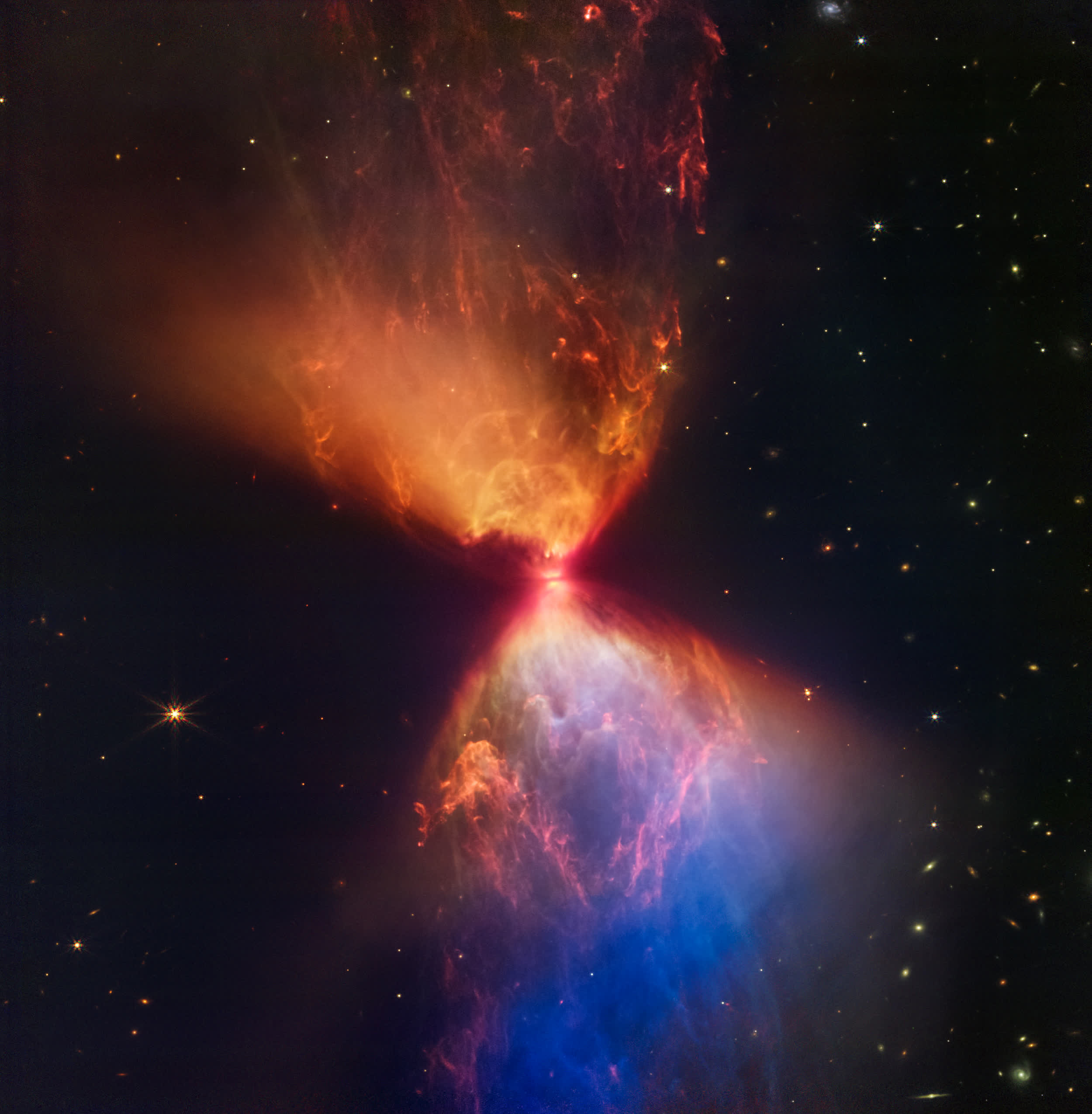In a nutshell: The latest image from NASA's James Webb Space Telescope highlights a star in the making. NASA used Webb's Near-Infrared Camera (NIRCam) to capture a glimpse of the once-hidden features of a protostar in dark cloud L1527, which is located in the Taurus constellation. The protostar itself is hidden from view in the "neck" of the hourglass behind the black band seen in the middle. The band is roughly the size of our own solar system and will eventually give rise to new planets.
Light from the protostar leaks out to illuminate cavities created as material is ejected from the incubating star where it collides with surrounding matter. This is illustrated in Webb's observation as blue and orange clouds. Blue clouds represent areas where the dust is thinnest, and orange pockets signify regions where the dust is thicker and less blue light is able to escape. The upper central region features bubble-like shapes which are due to sporadic ejections, or stellar "burps."
Webb's image also highlights filaments of molecular hydrogen that have been shocked by ejections from the protostar, stunting the formation of additional stars that would otherwise form throughout the surrounding cloud. Instead, the protostar dominates the space and takes the majority of material for itself.
Related reading: NASA adjusts Webb Telescope's schedule to minimize micrometeoroid threats
NASA believes L1527 is only about 100,000 years old, an infant in the overall scope of space time. At present, it is mostly just a puffy clump of gas that is between 20 percent and 40 percent the mass of our Sun. For comparison, it is believed that our Sun is around 4.5 billion years old.
L1527 is considered a class 0 protostar meaning it is in the earliest stage of star formation. It has a long way to go before becoming a full-fledged star capable of producing its own energy through nuclear fusion of hydrogen. As the protostar continues to gather mass, its core will compress and its temperature will rise. Eventually, it will reach the threshold to start nuclear fusion.
https://www.techspot.com/news/96688-james-webb-telescope-captures-formation-new-star.html
